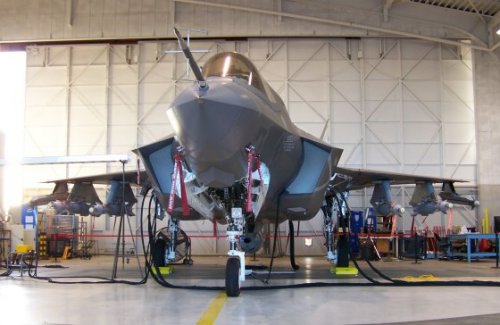Lampshade111 said:
True, but it really depends on the situation the pilot is in, the enemy his up against, etc. I just believe, that if it the weight increase is minimal, we might as well give him the option.
Alright, I think we are in the wrong page. I'm not saying thrust vectoring is bad, nor I'm saying it doesn't bring any advantage, I'm saying the advantages are not significant in light of emerging technology. The extra boost in maneuverability isn't that significant. Would I love to have an extra advantage? I would love to have ANY extra advantage. However, this goes back to my earlier comment, aircraft design is about compromise. And apparently Lockheed opted for EODAS. I'm not denying the advantages of TVC, I'm saying that emerging technology has shrink that advantage in a tactical and realistic sense to such a degree that it isn't significant to implement and as far as logic goes, it makes perfect sense.
Perhaps the option will show up eventually, but back in that stage of the design phase, it seemed liked less was expected from the F-35 as a whole.
Nope, its contender, x-32, does have 2D thrust vectoring, rectangular shape just like the f-22. Lockheed just went with a different approach, EODAS, which theoretically is far better in both term of defense and offense as I already explained in previous comments.
Yeah but nothing prevents you from having both.

In my opinion the only real concern should be weight (although looking at the F-35's current status I should include cost there too). If you were to argue against TVC on the basis of "our pilots will screw it up" you could apply that to so many other things. I mean our pilots could screw up with the afterburners and use up all their fuel.
Weight, complexity in maintainance, cost, shorten life service, etc. If there's nothing to prevent it, it would have been there. Nobody dislike an extra boost if there's zero of penalty. SEcondly, I never went with the "our pilots will screw it up" argument. I told you I dislike this kind of argument as they are vague and represent. I like to bring it to the table of logic, look at it from different angle on a tactical sense, against foreseeable enemy, and within context, which was exactly what I did. I named the advantages of TVC, which was low speed maneuver and less drag at supersonic. I then demonstrated that low speed maneuvers are suicidal both theoretically and with real life example. I then moved to the supersonic regime, and shown that overlapping sensors can compensate for its lack of maneuverability. Remember that the f-35 isn't agile against the super agile fighters like that of the russians, but that doesn't mean they aren't agile enough when coupled with its sensors to evade missiles or launch an attack and provide a better package in missile evading than the other aircraft out there.
Excuse me but I worded myself poorly. It is not wasted, and it is certainly a good idea to have those systems there. Yet when it comes to missile evasion, they are not used to their full potential on an airframe that is rather lacking compared to other recent designs.
But the other recent design doesn't have its sensors, isn't it? Look at it this way, f-35's agility is a knife, and it's not as shiny as the other guys have, but than it also has a gun, so when you couple the dull knife and the gun together, it beats the crap out of the other guys' big sword. So the question is: would you waste time spending money and time trying to buy a big shiny sword when you have a gun already?
Thanks for the article, I actually haven't checked out Jane's sight in awhile.
Yep, the article prove 2 of my points: the high g's maneuver has become less and less relevant (not irrelevant, that's why the f-35 isn't a subsonic flying wing), and evading missile is about trying to get out of its no escape zone as much as possible.
I was under the impression that the later Flankers and Fulcrums (Su-30MK, Su-35BM, Mig-29SMT, Mig-35) had a HOBS capability for the R-74. Wasn't there some sort of early helmet mounted sight for the R-73 on Su-27s and Mig-29s too?
Yes, there were HMD. However, the off bore sight was very limited, thus the need for supermaneuverability stayed.
Honestly I suppose most of the problem is that I rather find the F-35 lacking as a whole. For the sake of STOVL capability the the design itself is rather... "simplistic" in a sense. This wouldn't be as much of a problem in my opinion if the F-35 didn't have such large shoes to fill.
Well, this goes back to the f-22 production end comment I made in the other thread. Sometimes the best choice isn't the perfect one. In the time of JSF, we realized if we don't combine 3 variants together and make painful compromises to its performance, we not gonna have sufficient numbers of them due to high acquisition cost. It's just like you can either buy something fancy that you love to eat, but than the cost would be too high so you starve from not eating enough, with another choice of getting something adequate but enough so you can go on the day working. The US military assured that simulation shown that f-35 is 4x more effective than anything else save f-22 in air to air combat, and it seems that 9 other countries are convinced, so.... Would I love it to be 6x more effective? DEFINITELY, but not at the price that I can't buy enough of them and to meet my need.






